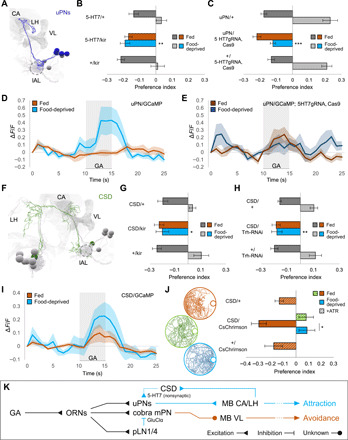Fig. 3. Upon food deprivation, CSD activates uPNs via the excitatory 5-HT7 receptor.

(A) EM reconstruction of uPNs [mushroom body calyx (CA), vertical lobe (VL), larval antennal lobe (lAL; circled), lateral horn (LH)]. (B) Silencing 5-HT7–expressing neurons specifically abolishes food-deprived attraction (one-way ANOVA, **P < 0.01; n = 8). (C) CRISPR knockout of 5-HT7 in uPNs specifically abolishes food-deprived attraction (one-way ANOVA, ***P < 0.001; n = 8 to 14). (D and E) uPN calcium responses to GA (10−6) in wild-type (light) and uPN-specific 5-HT7 knockout larvae (dark). 5-HT7 knockout abolishes state-dependent enhancement of uPN responses seen in wild-type (n = 6 to 7). (F) EM reconstruction of CSD neuron [neuropil annotations as in (A)]. (G) Silencing CSD (R60F02-GAL4) specifically abolishes food-deprived attraction (Kruskal-Wallis test, *P < 0.05; n = 6 to 8). (H) Disrupting 5-HT synthesis in CSD via Trh knockdown specifically abolishes food-deprived attraction (Kruskal-Wallis test, **P < 0.01; n = 8). (I) CSD exhibits increased calcium responses to GA (10−8) following food deprivation (n = 8 to 10). (J) Optogenetic activation of CSD in fed larvae reproduces the state-dependent behavioral switch (one-way ANOVA, *P < 0.05; n = 12 to 20). (K) Upon food deprivation, elevated 5-HT from CSD excites uPNs via 5-HT7 receptor, promoting behavioral attraction.
